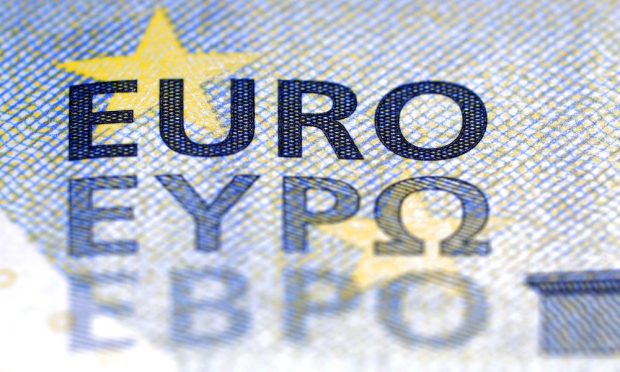EPC Chair On SEPA’s Instant Credit Transfer, One Year In

Last year, the European Payments Council (EPC) debuted the SEPA Instant Credit Transfer scheme, where credit transfers are done in 10 seconds — or less — across SEPA. Javier Santamaria, EPC chair, tells PYMNTS in the latest Monday Conversation that the embrace by PSPs and banks has been enthusiastic — and lays out the roadmap ahead.
An anniversary for any endeavor — a new relationship, a job, perhaps even an instant credit transfer scheme — offers an occasion for reflection, to measure progress made and any remaining goals.
Last year, the European Payments Council (EPC) launched the SEPA Instant Credit Transfer (SCT Inst) scheme, which officially debuted on Nov. 21 of 2017. Javier Santamaria, chair of the EPC, provided an update to PYMNTS on the challenges both faced and still present — and what lies ahead.
From initial launch to 12 months in, the number of payments services providers (PSPs) has more than tripled, and the number of countries that have signed up has more than doubled. Santamaria told Karen Webster during the latest Monday Conversation that, at the year mark, more than 2,000 PSPs from 16 countries were on board, up from a respective tally of 600 PSPs and eight countries. This represents over 49 percent of European PSPs, said the executive.
With the SCT Inst scheme, he noted, end users can transfer up to €15,000 ($17,004 USD) between accounts 24/7, with a maximum 10-second time frame. Santamaria stated that there’s evidence from the field that transactions are getting done in as little as three seconds.
By any numeric count, the SCT Inst scheme can be termed a success, measured in users and broadened country reach. However, as Santamaria said, the challenges of bringing instant payment solutions to a pan-European audience — i.e., toward ubiquity — “lie not with the birth, but with the early times of the endeavor.”
Still Early Times
It’s early times indeed. As he stated, the EPC aims to bring SCT Inst to a progressively wider geographical scope of countries, ultimately reaching 34 nations, as laid out in plans disclosed last year.
“On the one hand,” he said, the initial uptake of the SEPA scheme shows that that “makes sense,” and that initial use cases and transaction limits (more on both in a moment) satisfy at least some demands coming from the markets. Yet, he admitted, as always with such a technology-driven sea change in payments, where banks and PSPs seek to digitize transactions, challenges remain.
“It is not easy for institutions” to make the shift to the SCT Inst scheme, even though it is based on the existing SEPA credit transfer scheme (which existed before the “instant” functionality). However, since it is flexible enough to be used for both national and cross-border transactions, there’s an imperative for PSPs and banks to embrace SCT Inst, as it will be the first and only European-wide scheme for those payments. (He did note, however, that the goal of SEPA is not to replace existing card rails or ACH transactions.)
Firms must redefine their processing and operations; they need to invest heavily in IT projects, Santamaria noted. “They have to integrate this new concept and functionality in their systems,” he said. “It’s an integration that is not backward-looking, but forward-looking.”
He told Webster that the transition to instant payments has been smoothed somewhat by fact that the scheme is based on international open standards. Data formats rely on ISO 20022, as the EPC has stated in the past. Clearing and settlement mechanisms are automatic, he said.
The instant payments system launched last year by EBA Clearing (known as RT1) has logged several million transactions, while PSPs and banks are free to use any tech providers/infrastructure they want. The overarching theme, though, is one of interoperability.
The Spark, Then Ignition
It may indeed be a sizable undertaking to bring instant payments to a pan-European stage, to touch a market of 500 million individuals and 25 million enterprises. However, upon doing the heavy lifting (Santamaria stated that there has been no reluctance from banks or PSPs to adapt to SCT Inst), benefits/advantages accrue for those who adopt this functionality.
Specifically, digital payments are designed to be used online, whether through computers or mobile conduits. Real-time accessibility to funds means SEPA “provides a new way for the customers to relate to the bank, and is providing a new customer interface and experience.”
There is some flexibility within the model, according to the EPC. For example, in documents outlining instant credit transfer, SCT Inst participants are able to agree on shorter execution times on a bilateral or multilateral basis. Though transactions must be made in euros, the payment accounts held at PSPs that operate in SEPA do not have to be denominated in euros.
Instant payments, he said, offer a variety of use cases that span emergency fund transfers and, of course, peer-to-peer (P2P) transactions (splitting the bill, for instance). In reference to B2C payments, instant payments can cover compensation or reimburse consumers for returned goods.
As more countries across the SEPA geographic realm adopt SCT Inst, other regions around the globe may find such payments innovation to be instructive. Santamaria said the EPC’s intellectual property is on offer for other countries that are examining faster digital payments.
“We are confident that, in the years to come, [we] will reach a critical mass” by 2020, with full reachability into the European market, Santamaria told Webster.